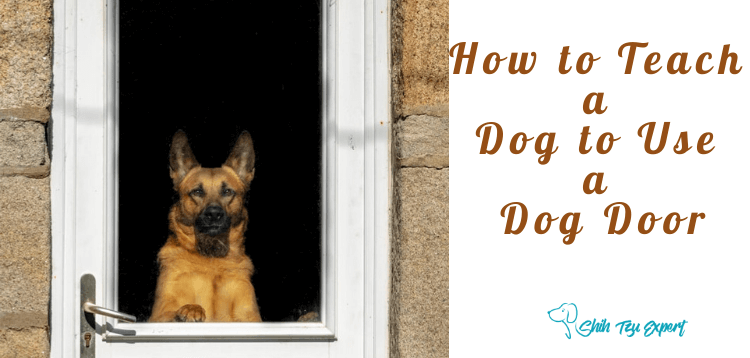Why Is My Dog Really Skinny After Having Puppies?
It is normal for your dog to lose weight after giving birth. This article explains how to keep a nursing dog healthy, including tips on how the dog should be fed and warning signs on when the dog needs to be taken to the vet.

Why Is My Dog Not Gaining Weight After Having Puppies?
Your dog is not gaining weight because for her, birth was just the beginning of the journey, not the end. Now, she will have to nurse her puppies for roughly eight weeks. She’ll need a lot more food just to keep herself from losing weight.
Is It Normal For My Dog To Be Super Skinny After Having Puppies?
It is normal for a dog to lose weight after giving birth. It can also be very difficult for them to gain weight after the fact because they need to focus on producing milk to nurse the puppies. Depending on the size of the litter, a mother’s energy requirements may be double or even triple the norm.
How To Get My Dog To Gain Weight After Having Puppies?
This article will discuss many of the ways nursing dogs need to eat in order to stay healthy after giving birth. Many of these methods will help her gain weight:
- High-calorie treats
- Weight-gain treats
- Feeding your dog more (whether it’s by serving them more meals, giving them larger portions, or just leaving a bowl out all the time)
- Cooking your dog protein-based meals like meat or eggs
What And How To Feed Mother Dog After Giving Birth?

Extra Nutrition From Clean Sources (This Is A Good Time To Cleanup Your Dog’s Diet!)
You may want to feed your nursing dog puppy food. Unlike regular dog food, puppy food has added calories and extra nutrients (such as calcium and vitamin C) because puppies need extra energy to grow. Puppy food will help your dog gain weight as well as provide adequate nutrition for the pups.
No Unhealthy Treats!
It is important to give your dog high-calorie treats so they can keep up their energy levels while nursing their pups. Some treats to consider are salmon and sweet potato treats.
The treats shouldn’t contain a lot of carbs and fats, and there should always be a real meat source in the treat. If you buy treats from the store, make sure that the treats contain actual meat and not a byproduct or meat and bone meal.
Increase The Frequency Of Meals
Another thing to try is to feed your dog more often. In other words, instead of giving your dog two meals a day, give them three or four times a day.
This is different from the option described in the next section (increasing the quantity of meals) because if you increase the frequency of your dog’s meals, you should still provide them with the same amount of food they normally get. You shouldn’t do both because you don’t want your dog to overeat; that could make her sick.
Increase The Quantity Of Meals
Some vets recommend that you should increase a nursing dog’s food amount by 25 percent per puppy per day. For example, if your dog was eating two cups of food a day, and she gives birth to four puppies, she should be eating four cups of food a day while lactating.
Increase The Quality Of Meals
You may want to change your dog’s diet to make sure they’re gaining weight. The American Society for the Prevention of Cruelty to Animals (ASPCA) recommends high quality food that is specifically designed for nursing dogs.
Keep Food Available For Free Feeding When Even Your Nursing Dog Is Hungry
You may decide that instead of increasing the frequency or quality of meals, you just make sure that your dog can constantly access food.
Free feeding is when you leave out of a dish of food for your dog to have unlimited access to all day. Your dog can then choose how much and when they eat. Because they will constantly have food available to them, your dog will eat more and gain weight.
Also, if a bowl of food is always out, the puppies might get curious and try sampling the food, which could get them weaned even faster.
Keep Plenty Of Water And Feed Other Liquids Like Goat’s Milk
A nursing dog needs easy access to fresh, clean water because they’re producing so much milk. A lot of the water your dog normally intakes is going toward producing that milk, so they’re drinking a lot more than usual.
If your dog refuses to drink water, you may want to try other alternatives to help replenish your dog’s bodily fluids. One option is chicken broth. Try a small amount, and make sure it doesn’t have too much oil or salt. There is no point in giving your dog broth that contains ingredients that would be bad for their health.
Feed Plenty Of Clean Protein
Whatever a nursing dog eats gets passed on to her pups through her milk. So, it’s very important to make sure your dog is eating a lot of protein.
Feed Plenty Of Clean Calories
To feed her pups while also sustaining herself, a nursing dog will need a lot more calories to keep up her energy levels: two to four times as many calories.
Provide Extra Vitamins
If you think your dog’s current diet doesn’t have enough vitamins to match their new lifestyle, you should talk to your vet about supplements. The vet might recommend supplements, or they might give you advice on how to add to your dog’s diet.
Here are some of the things you could try:
- Add a teaspoon of olive oil to the food. This will add some healthy fats and calories.
- Mix in some cottage cheese with the food. This will provide additional calories and calcium.
- Smear peanut butter on treats for added protein.
- Occasionally give your dog pieces of avocado for added fat.
Get The Dog To Rest A Lot More Than Usual (It’s An Exhausting/Draining Time For Both You And The Pup!
One of the reasons your dog may be losing weight is because they are not getting enough rest. It’s a stressful time for her: she’s just given birth, possibly for the first time, to several puppies. Now she has to take care of them while also taking care of herself.
You may want to bring the food to your dog so they don’t have to get up and leave their puppies, which many new mothers are hesitant to do.
What Must A Nursing Dog Eat?
The FDA recommends that a nursing dog’s food contain at least 22 percent protein and 8 percent fat. The American Kennel Club suggests a diet that contains at least 29 percent protein, 17 percent fat, and less than 5 percent fiber. Either way, your dog should be eating a lot of protein.
What Must Not A Nursing Dog Eat?
A nursing dog shouldn’t have vegetables. Vegetables can cause diarrhea and an upset stomach. Also, because they are low in fat, protein, and calories, they aren’t very helpful for nursing dogs.
Nursing dogs also shouldn’t eat puppy foods designed for large breeds, even if she is a large breed. These foods don’t provide enough calcium because of the risk of abnormal bone development in larger dogs.
ASPCA also recommends that you feed your dog commercially prepared food instead of a homemade recipe. Nursing dogs require a special balance of vitamins and minerals that a homemade diet may not fulfill.
You should also avoid a raw diet, since raw diets contain bacteria that could affect the puppies, whose immune systems have only just begun to develop.
How Much Should I Be Feeding My Nursing Dog?
You should talk to your vet to be sure. The answer to this question depends on your dog’s breed, the number of puppies she just had, and other factors. A vet will be able to make a recommendation on whether it would be better for you to increase the number of meals your dog has or if you should just always have a food bowl out.
What Foods Help Nursing Dogs Gain Weight?
There are some dog treats that are made with the specific purpose of helping your dog gain weight. They are specially designed to increase the dog’s fat and caloric intake in a healthy way.
There are also some human foods that can help dogs gain weight:
- Eggs (scrambled or hard-boiled)
- Meat baby foods
- Cooked hamburger with parmesan cheese
- Brown rice cooked in chicken broth
Do Dogs Bodies Go Back To Normal After Pregnancy?
Yes.
Your dog’s teats will recede as the puppies begin weaning. Once she stops lactating, she’ll be able to regain her weight and return to her pre-pregnancy body.
Can You Give A Nursing Dog Too Much Calcium? (Too Much Calcium Can Be Dangerous! While Some Calcium Can Help, Too Much Is Dangerous!!)!
Nursing dogs do need some calcium, so they can pass that on to their puppies to help with their bone development. However, too much calcium is associated with bone disease.
That’s just for any dog that has too much calcium. If a nursing dog intakes too much calcium, it can suppress parathyroid hormone production and increase the risk of developing eclampsia.
What Is Eclampsia?
Eclampsia occurs when the parathyroid gland is not active enough, causing calcium levels in nursing dogs to drop. Statistically, eclampsia most often occurs 1-5 weeks after the dog gives birth.
Eclampsia is caused by the mother not having enough calcium in her body due to her giving out more calcium through lactation than she was taking in. Two main causes of this are insufficient calcium in the diet and greater demands for lactation due to the mother’s size or the size of the litter.
Eclampsia can occur before, during, and after birth.
Do All Nursing Dogs Get Eclampsia?
No.
Eclampsia is more commonly seen when there is a larger litter, since it implies that the nursing dog is unable to keep up with the calcium loss due to lactation. Eclampsia is also more likely to occur in smaller breeds, such as:
- Chihuahuas
- Mexican hairless dogs
- Miniature Pinschers
- Miniature poodles
- Shih-Tzus
How Do I Know Whether My Nursing Dog Has Eclampsia?
There is a wide range of symptoms to look out for, varied based on the severity of the condition:
- Changes in behavior
- Changes in the way they move
- Coma
- Confusion
- Death
- Excessive urination/thirst
- Hyperthermia (increased body temperature)
- Muscle spasms
- Panting
- Puerperal Tetany, a type of paralysis in which the dog has trouble walking or standing due to stiff limbs
- Restlessness
- Salivation
- Seizures, which can lead to the buildup of fluid in the brain and cause a cerebral edema
- Sensitivity
- Tachycardia, which is when the dog’s heart rate is abnormally rapid
- Tremors
- Vomiting
- Weakness
Eclampsia is diagnosed by a vet. They’ll want to rule out conditions with similar symptoms, including metritis, hypoglycemia (low blood sugar), and hypoparathyroidism. A serum calcium concentration test can be particularly telling; if your dog has a concentration of less than 7 mg/dL, they have eclampsia.
What Should I Do If My Dog Has Eclampsia?
Take your dog to the vet. Eclampsia can be fatal.
Treatment will depend on your dog’s symptoms. If your dog was having seizures, the vet will prescribe anti-seizure drugs. If your dog was experiencing irregular heart activity, it is more likely that your vet will want to monitor their heart rate during calcium administration, either with a stethoscope or an electrocardiogram.
In any case, your dog will need calcium. This will be accomplished with an IV. It will begin right away but slowly to avoid toxicity. Even 15-20 minutes on the IV can rapidly improve a dog’s symptoms and immediately relax their muscles.
Can The Dog Be Treated At Home?
No.
Though the cause may seem mild, eclampsia is a dangerous condition. It is best to take your dog to the vet and listen to their recommendations on how to proceed.
Do Nursing Dogs Need Additional Nutrition?
A nursing dog needs a lot more calories, protein, and fat to make up for the nutrients and energy she’ll dedicate to the pups’ milk. She also needs more calcium and phosphorus in her diet. This will help with the pups’ bone development and the mother’s mineral depletion through lactation.
Nursing dogs should also consume food that has DHA to facilitate the development of the puppies’ brains and nervous systems.
How To Return To A Pre-Pregnancy Diet?
Most puppies are weaned around 7-8 weeks after birth. Once the puppies are weaned, the mother doesn’t need as many calories, and she can return to a pre-pregnancy diet.
What Are Dangerous Signs To Lookout For After A Dog Gives Birth?
Be on the lookout for these concerning signs:
- Vaginal discharge. It’s normal for a dog to discharge fluid after giving birth. However, not all discharge is normal. If it’s overly bloody, has an odor, or looks like pus, you should take your dog to the vet. If the discharge slows down but suddenly becomes worse, you should take her to the vet.
- Fever. Infections after birth are common, but if your dog has a temperature over 102.5 degrees Fahrenheit, call the vet.
- Metritis. This occurs due to trauma during delivery, such as placenta retention. If you notice any of these signs, contact your vet:
- Fever
- Lack of appetite
- Odorous vaginal discharge
- Lack of interest in the puppies
- Lack of milk production
- Eclampsia. This has been covered in-depth.
- Mastitis. Mastitis is the inflammation of the mammary tissues. The mammaries will become hard, red, and painful due to the infection. While not harmful, your dog will need treatment because nursing will be painful.
- Agalactia. Agalactia is when the dog is not producing milk. If the puppies cannot get milk from their mother, they will need to be supplemented since they need the nutrients and antibodies.
References
https://vcahospitals.com/know-your-pet/feeding-the-nursing-dog
https://www.petmd.com/dog/conditions/reproductive/dog-pregnancy-birth-and-puppy-care-complete-guide#post_partum_health_issues
![Best Cheap Dog Foods - our Top 10 Picks of High Quality Brands That Are Still Affordable [Under $1 per pound!] in 2023 Best Cheap Dog Foods - our Top 10 Picks of High Quality Brands That Are Still Affordable [Under $1 per pound!] in 2023](https://shihtzuexpert.com/wp-content/uploads/2018/01/Best-Cheap-Dog-Food-Featured-image.png)

![6 Best Dog Treadmills for 2023 [Buyer’s Guide] 6 Best Dog Treadmills for 2023 [Buyer’s Guide]](https://shihtzuexpert.com/wp-content/uploads/2019/04/Best-Dog-Treadmills-1.png)

